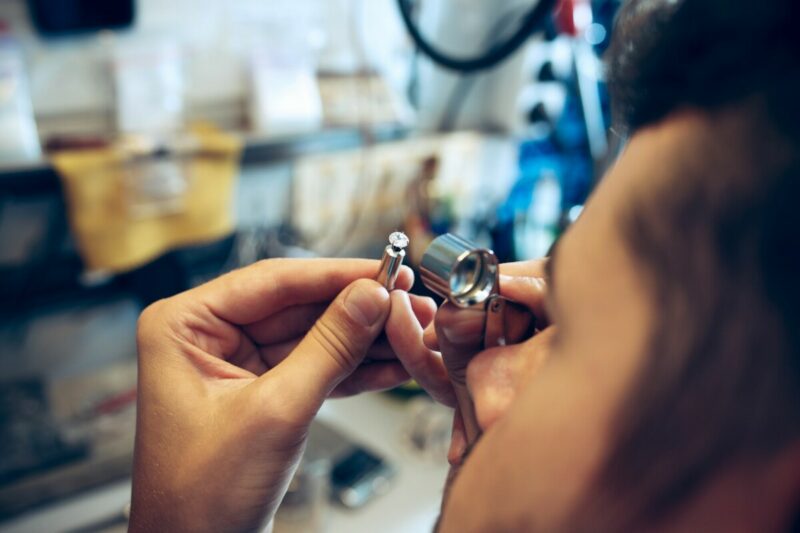Gemology and Shimmering Stones
When you see a beautiful piece of jewelry featuring shimmering stones, gemology probably isn’t the first thing that comes to mind. You think of how great it looks, and how it would look even better on your finger or gracing the neckline contour of your favorite black dress. Whether it’s a diamond, ruby, emerald or any of the other eye-catching gemstones, there’s a field of study as well as folks who make it their career to study these stunning minerals.
Simply put, gemology is the scientific study of gemstones. As a geoscience, it’s a branch of mineralogy. Those who study in the field of gemology are gemologists, the folks who make a living scientifically distinguishing one gemstone from another.

Gem identification is at the center of gemology. Some gems are impossible to distinguish by the naked eye, but physical properties and crystal structures can easily determine identification. For uncut gems, a gemologist may use a scratch test to determine the hardness or observe the gem’s reaction to heat or acid to narrow down identification.
There are also instruments that can help aid in identification without harming the stone. These instruments are used to measure physical and optical properties. These non-destructive methods allow for easy identification without the need for expensive lab equipment or years of scientific training.
What role does gemology play in the jewelry you own and pieces you may someday add to your collection? Here’s how it ties together.
Jewelers and Goldsmiths
This may seem like an obvious answer. After all, you’d expect your jeweler to easily identify stones in the jewelry you buy or bring in for cleaning and repairs. For goldsmiths, understanding the characteristics of individual stones is crucial in creating the correct setting. Some stones can handle more pressure than others, using too much pressure in a setting could damage the gem. In repair work, many times high-temperature soldering is involved, so it’s important to know if a gem is heat sensitive before the work begins.
Gem Cutters
Gem cutters, or lapidaries, also rely on gemology to help them produce the most eye-catching looking gems possible. Since different gems hold different structural properties, cutting and polishing techniques will vary from stone to stone. While one method could be perfect for one stone, using that same technique on a different type of stone could cause major damage. They not only have to understand the stone but how the type of cut will impact the color of that particular gem – which will impact the value. By carefully choosing the location of each facet – the flat surface cut into gemstones – a lapidary can make a gem truly breathtaking.

A dive into the rabbit hole of gemology can be fascinating. Even by reading up on the study just a little, you come out the other side with a deeper appreciation for the beautiful gems that are a part of each breathtaking piece of jewelry.
While you don’t have to know the complete gemology of the stones you love, just know where to go to get the jewelry you desire, Morgan’s Jewelers. Let us help you find the right piece featuring the gem that’s just the right cut to make you sparkle and shine, whether it’s on your finger or gracing the neckline contour of your favorite black dress. At Morgan’s Jewelers, you’ll be taken care of. Come see us at 77 East 3rd Street in Historic Downtown Winona, Minnesota. Bring home something special in a burgundy box.


